FEATURES|THEMES|Art and Archaeology
Buddhism – The Golden Heritage of Bengal
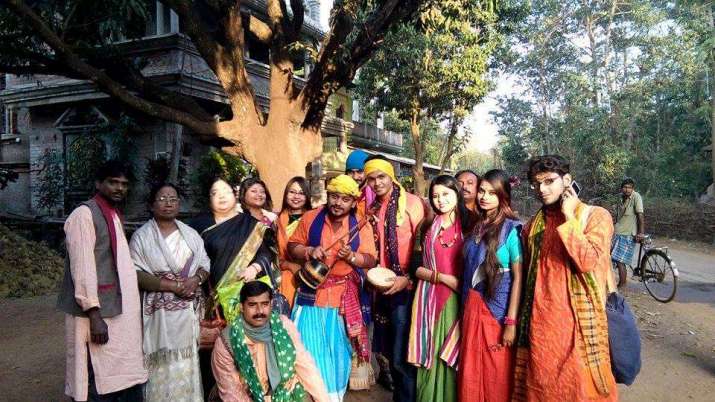 Image courtesy of the author
Image courtesy of the authorAncient Bengal was a major center of Buddhist learning, art, and imperialism; indeed, Buddhism is the basis of Bengal’s cultural and linguistic heritage—the earliest poem-song in Bengali is Charyapada, which was composed by the Buddhist sahajiya siddhacharyas or monk-gurus. According to contemporary scholars, the term Dharma in Bengali means “Bauddha Dharma” (Buddhadharma) or Buddhism and the term Dharmapuja means “Buddhapuja” or worship of Buddha. When Buddhism began to decline in different parts of India, it took its last shelter in Bengal.
From time immemorial, travelers and pilgrims have longed to explore Bengal’s magnificent monasteries, stupas, chaityas (prayer halls), and ancient seats of learning. Through the ages, such travelers have been a valuable source of information and recorded evidence in their travelogues. If we study only the archeological evidence of Buddhism’s past, we may arrive at mistaken conclusions because unless Buddhist texts, literature, paintings, sculpture are also studied comparatively, the soul of Buddhism or the Buddha’s wisdom cannot be properly understood.
The Buddhist era doesn’t merely refer to the Buddha’s lifetime. More meaningfully it denotes the era that was instrumental in bringing alive the phenomenon of the Buddha’s teachings. Buddhism has a rich heritage in Bengal, flourishing during the Pala dynasty (750–1174 CE), but it has roots even earlier, dating to the reign of Emperor Ashoka (r. c.268–232 BCE). Buddhism began to decline from the 12th century, and eventually completely disappeared from Bengal. To understand the real essence of Buddhism in ancient Bengal, we have to view not only the heritage sites in modern-day West Bengal, we also need to get an idea of those in Bangladesh.
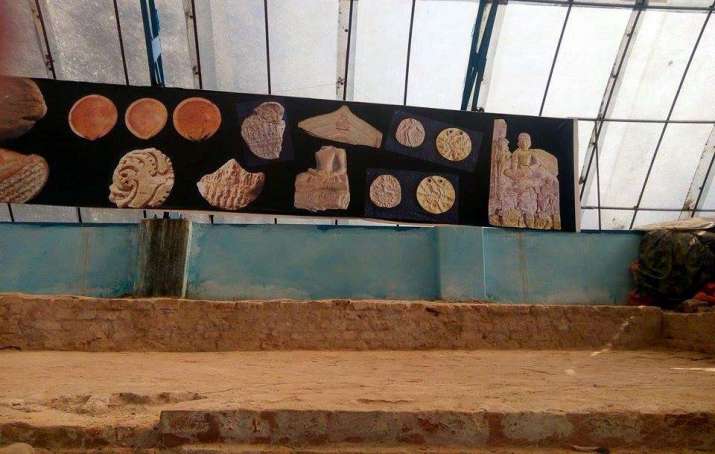 Artifacts from the recent archeological excavation of Mogalmari in West Bengal. Image courtesy of the author
Artifacts from the recent archeological excavation of Mogalmari in West Bengal. Image courtesy of the authorBuddhist heritage sites in Bangladesh
Mahasthangarh. This is an ancient archeological site established in 2500 BCE on the western bank of the Karatoya River, beside Bogra-Rangpur Road and some 18 kilometers north of the city of Bogra. This spectacular site is an imposing landmark, dominated by a fortified, rectangular enclosure among the surrounding paddy fields. Beyond the fortified area, other ancient ruins fan out in a semicircle with a radius of about eight kilometers. Several isolated mounds—including Govinda Bhita Temple, Khodai Pathar Mound, Mankalir Kunda, Parasuramer Bedi, and Jiyat Kunda—surround the fortified city.
Sompur Vihara. Located in Rajshahi District, Sompur Vihara was built under the royal patronage of the 8th century emperor Dharmapala between 770 and 810 CE and is considered one of the most important archaeological sites in the entire sub-continent. The renowned Buddhist scholar Atisa Dipamkara Srijnana (980–1054 CE) stayed at this mahavihara for many years.
Salban Vihara at Mainamati. The eastern city of Comilla is home to another of the most important Buddhist archeological sites in the region. Salban Vihara (previously called Shalban Rajar Bari) was founded by King Shri Bhavadeva at the end of the 8th century. After archaeological excavation unearthed the Buddhist monastery, it was identified as Salban Vihara from the terracotta seals and copper plates discovered nearby.
Jagaddala Mahavihara. This Buddhist monastery dates to the early medieval era and specialized in Vajrayana Buddhism. It was a seat of learning in Varendra, a region of ancient Bengal now part of Bangladesh, founded by one of the later kings of the Pala dynasty—probably Ramapala (r. 1082–1124). Archaeologists have unearthed the terracotta plaques, ornamental bricks, nails, a gold ingot, and stone images of Tara, Jhambala, Atisa Dipamkara Srijnana, and Shakyamuni Buddha.
Wari-Bateshwar. The site of an ancient fort city dating back to 450 BCE, the 2,500-year-old ruins near the old course of the Brahmaputra River are a major archaeological discovery that challenges previous theories about early urban civilizations in ancient Bengal.
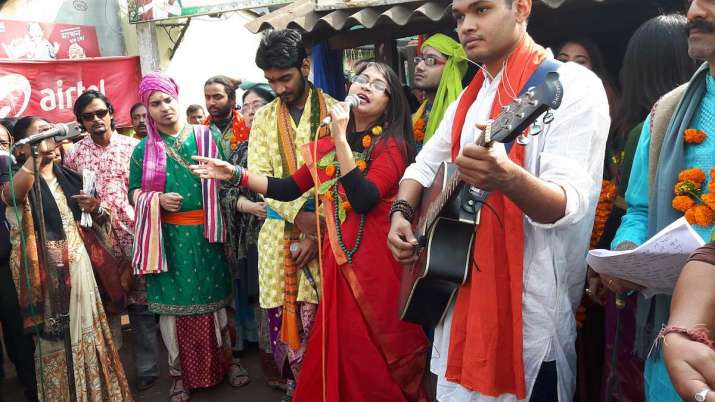 Street theater for the first Buddhist Heritage Festival held alongside the excavation. Image courtesy of the author
Street theater for the first Buddhist Heritage Festival held alongside the excavation. Image courtesy of the authorBuddhist heritage sites in West Bengal
Tamralipti. An ancient port city and one of the most significant Buddhist kingdoms visited by the Chinese Buddhist monk, scholar, and translator Xuanzang (c. 602–64 CE) in 639. Here he encountered 10 monasteries, each with 1,000 monks in residence. The modern town of Tamluk in Midnapur District now occupies the site where Tamralipti once stood. In the 5th Century, the Chinese pilgrim Faxian (337–c. 422 CE) visited 24 Buddhist monasteries in Tamralipti. Tamrolipti was well connected through sea and river routes and had trade relations with kingdoms within and outside the subcontinent.
Raktamrittika Mahavihara. Karnasubarna was the ancient capital of Shashanka, the first independent ruler of Bengal, who reigned over the kingdom of Gouda from 590–625 CE. It contains the ruins of the ancient university of Raktamrittika Mahavihar, which was visited by Xuanzang. He observed that Raktamrittika Mahavihara was an important center of learning for Vajrayana Buddhism. A large number of relics of archaeological significance have been found at the site, including stucco heads, and seals bearing Buddhist symbols.
Jagjibanpur. The monastery of Jagjibanpur on the eastern fringes of Malda District, close to the border with Bangladesh, came to light when residents found a copper plate decorated with a royal seal. Researchers dated this to the 9th century, during the reign of Mahendrapala (r. c. 845–60 CE). Archaeologists found five major mounds at the site: Tulabhita, Akhridanga, Nimdanga, Nandagarh, and Maibhita in and around the village of Jagjivanpur. Tulabhita, the biggest and most impressive, was first selected for excavation and an extensive brick monastery complex was discovered. Archaeologists say the monastery bears a resemblance with the great Vikramsila Mahavihara. A bronze image of a seated Buddha depicting the Bhumisparsha mudra was recovered during excavation, along with a metal image of the deity Marichi, a large number of terracotta seals, plaques, semi-precious beads, and terracotta pot shards.
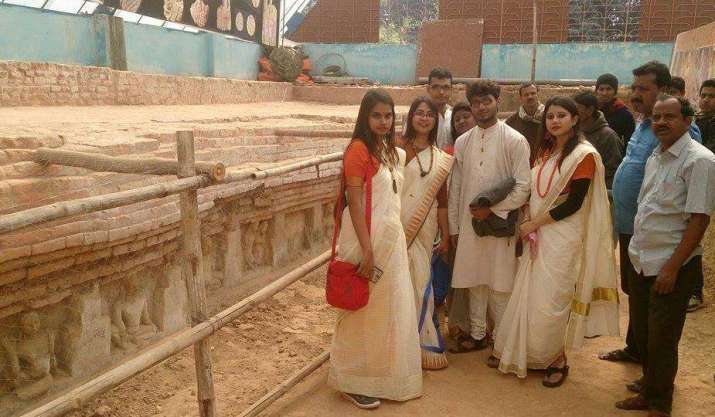 Visiting the archeological excavation of Mogalmari in West Bengal. Image courtesy of the author
Visiting the archeological excavation of Mogalmari in West Bengal. Image courtesy of the authorChandraketugarh. This is an archaeological site beside the Bidyadhari River, about 35 kilometers northeast of Kolkata, in North 24 Parganas District, near Berachampa Township and the Haroa Road railhead. Years of excavations have unearthed many relics, significantly Northern Black Polished Ware, which suggests that Chandraketugarh dates to 400–100 BCE. According to some historians, the site and surrounding area may have been known to ancient Greek and Roman writers as Gangaridai, named after the Ganges Delta.
Dum Dum excavations. This excavation is an important landmark in the history of Bengal’s Buddhist heritage and has been the source of so much evidence that the history of Bengal, or more precisely the history of nearby Kolkata, may be rewritten. Discussion about the origin of Kolkata has traditionally centered mainly on the arrival of East India Company administrator Job Charnock, or on the three villages that once occupied the area—Kalikata, Sutanuti, and Gobindapur. But artifacts unearthed during excavations at the famous Dum Dum mound reveal the area’s history extends at least to the 2nd century BCE. According to the Archaeological Survey of India (ASI), traces of urban settlements bore a close resemblance to those found at Chandraketugarh.
Mogalmari. Archaeological excavations at the village of Mogalmari in West Medinipur reveal the colorful history of the Bengal region, including the 7th century Raktamrittika Vihara at Karnasubarna in the town of Murshidabad. The discovery is attributed to Prof. Ashok Dutta of the University of Calcutta’s Department of Archaeology, who identified the site as an early medieval Buddhist settlement that flourished from the 6th–12th century. Among the most interesting archaeological remains is Moghalmari Monastery, also known as Bandaka Monastery, which was documented in the travel journal of the monk Xuangzang. The monastery is believed to date to the 5th–6th century. Six excavations undertaken so far have revealed the largest monastery complex in West Bengal. A large number of medieval coins bearing Buddhist scriptures, pottery and ornate bricks, brick stupas, and figures of the Buddha and bodhisattvas have also been found. Although Tamralipta began to decline from the 7th century, there is evidence that Mogalmari Monastery survived until the 12th century because the nearby Subarnarekha River was a major trade route.
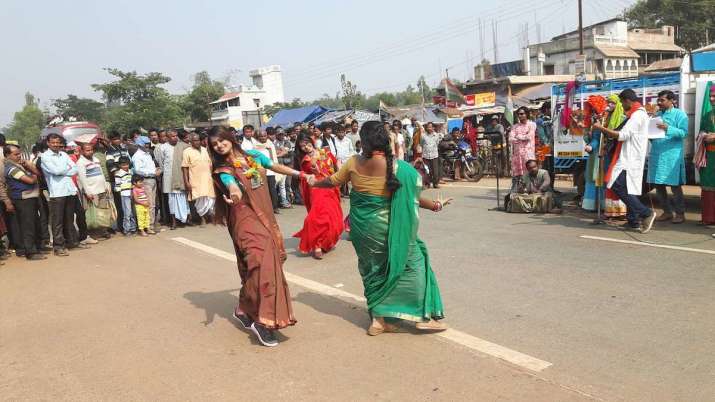 Street theater for the first Buddhist Heritage Festival held alongside the excavation. Image courtesy of the author
Street theater for the first Buddhist Heritage Festival held alongside the excavation. Image courtesy of the authorThe need to look back into the history of Bengal
Buddhism permeates the soul and soil of Bengal. The geological and archeological remains contain so many untold tales that could lead to new understandings and throw fresh light on the story of our past. Notably, all of the significant excavation sites of West Bengal and Bangladesh lie within a 400-kilometer radius with Kolkata at its center. This connecting link is growing stronger with more archeological developments in southern parts of Bengal, paving the way for the history of the region to be revisited or rewritten.
It is high time to look back and rediscover our heritage—this does not only concern archeological sites, monuments, monasteries, and other ruins, but a heritage that comes alive through a comparative study of texts, literature, sculptures, paintings, inscriptions, and our indigenous culture; a heritage that reveals the true essence of Buddhism and helps us to discover a world of unearthly treasures of happiness and bliss. This heritage can teach us the art of living through the wisdom of the Buddha—a wisdom practiced by many millions throughout the world.
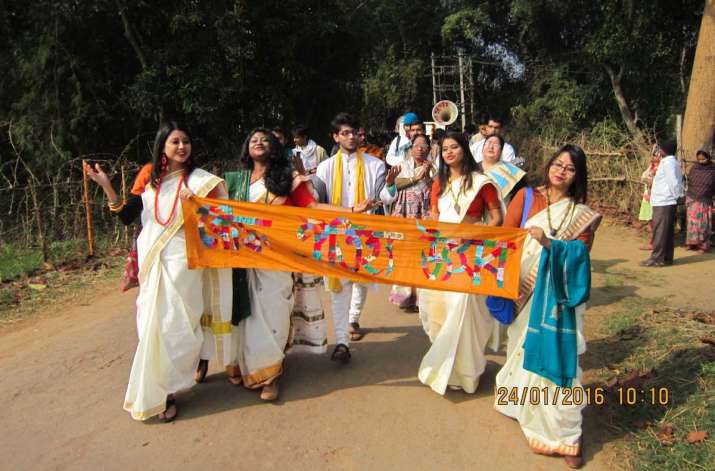 A morning processionfor the first Buddhist Heritage Festival held alongside the excavation. Image courtesy of the author
A morning processionfor the first Buddhist Heritage Festival held alongside the excavation. Image courtesy of the authorMadhusree Chowdhury is a cultural and social activist associated with heritage oraganisations such as Bauddha Dharmankur Sabha (BDS), the Maha Bodhi Society of India, and the Bengal Theosophical Society of India (BTS). The founder and director of dance-theatre platform Rupnagar Kolkata and philosophical and literary platform Attodeep, Madhusree is also the editor of the BDS Newsletter and co-editor of the journal of BTS. She has a strong interest in the intersection between religion and culture. Her articles have been published in international journals, including The Maha Bodhi from Kolkata and Mettawalokonaya from Sri Lanka. She has also participated as a panel speaker in many international seminars.
Related features from Buddhistdoor Global
Mogalmari Buddhist Monastery: A Notable Heritage Site in West Bengal
Treasures from Asia’s Oldest Museum: Buddhist Art from the Indian Museum, Kolkata – Exhibition Review














